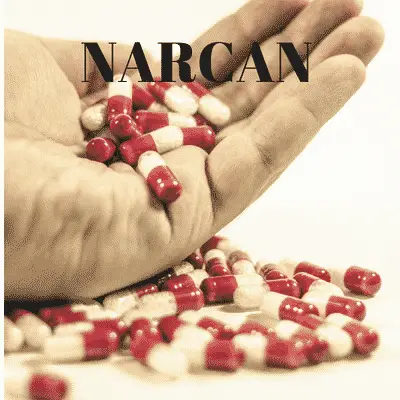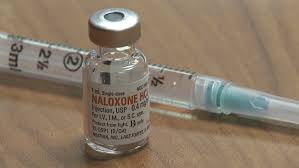The Heroin and Opioid Epidemic
Updated 3/31/2003
I’ve been a nurse for almost 30 years. I have worked in hospitals, clinics, trauma centers, and I have even done house visits. Over the past 30 years, I have seen many trends that come and go. However, I would like to discuss this opiate overdose trends. We now have Narcan to treat opiate overdose. Everybody is being taught, or encouraged, to carry Narcan. This article will discuss Narcan uses, doses, side effects, and interactions.
Narcan is being carried by police officers, firefighters, family members of people who abuse drugs, and even the addict themselves. However, according to this book, Narcan is not a miracle drug. Narcan is used for opioid overdose, but it also has side effects and interactions.
When I first became a nurse, in the early 90s, the big problem was crack. Crack cocaine was absolutely devastating. It destroyed whole families and communities. On top of that, there were many blood-borne diseases that people contracted because of injecting crack such as HIV and hepatitis C. I took care of people with heart attacks, liver diseases, and strokes related to crack abuse. Thousands and thousands were incarcerated because of crack abuse.
That era was devastating, but we finally got in front of the crack epidemic with substance abuse rehab, counseling, peer outreach, and behavior modification.
This is a Guide to help with drug addiction, alcohol addiction, heroin addiction, and smoking addiction,
Signs of Opioid Overdose
When a person is overdosing on opiates, the respirations decrease. In fact, respiratory distress is the most common cause of death. When a person comes to the emergency room with an opiate overdose, there are certain signs and symptoms that will make a suspect that this person has overdosed. For example, the pupils will contract and appear very small almost pinpoint. They are usually nodding out, and hard to wake up.
Some of the more serious signs of an overdose is a loss of consciousness and unresponsive to stimulus. The breathing is very slow and shallow. Sometimes they will also have a gurgling sound or choking sound. Finally, some of them actually lose their pulse, and they have to be resuscitated.
Emergency personnel now carry Narcan on ambulances, and they are also trained to recognize signs and symptoms of overdose. They are allowed to give Narcan on the scene. Narcan is given for drug overdoses for morphine, codeine, methadone, and oxycodone.
How Does Narcan Work?
I am concerned because of all the “chatter” that is going on in the streets about Narcan. Emergency personnel are giving people Narcan on the street, they are resuscitating them, and then they are refusing to be transported to the hospital. However, what people don’t understand is that Narcan has a very short half-life.
Short life means that the drug only works for a small amount of time. The effects of the drug are still felt by the body. Narcan works by blocking the Opioid receptors. Narcan works as an opiate antagonist.
Narcan Doses
Usage in Adults: Opioid Overdose-Known or Suspected: An initial dose of 0.4 mg to 2 mg of Narcan (naloxone) may be administered intravenously or intramuscularly. If the person does not wake up or has an improvement in the respiratory functions are not obtained, it may be repeated at two- to three-minute intervals.
Narcan Side Effects
When a person is administered Narcan, they have terrible side effects. Narcan Will usually work within 30 seconds. People will wake up extremely nauseated, vomiting, disoriented and shaking. Narcan will put some people into acute withdrawal syndrome which is not pretty.
Some other side effects are dizziness, diarrhea, nervousness, goosebumps, high blood pressure, low blood pressure, and sweating.
People don’t like Narcan side effects.In fact, I have taken care of people who were clearly overdosed, but they were able to be awakened, and they refused Narcan. Their reasoning was that it would make them “sick”.
These people often times have to be hospitalized because they have to be on a Narcan drip. There are also other street drugs out there that will interact with Narcan and cause a deadly reaction. The street drugs nowadays have many different things mixed with them. I am seeing people coming in with seizures and involuntary movements.
Summary
Narcan has been hailed as a “miracle drug“. Although it has saved many lives, Narcan has many side effects and interactions. If you are addicted to drugs, the best thing to do is to get treatment from a reputable rehab center.
FAQ
Certainly! I can provide you with information about Narcan and drug overdose. Please keep in mind that while I strive to provide accurate and up-to-date information, it’s always a good idea to consult with medical professionals or trusted sources for specific medical advice. Here are some frequently asked questions about Narcan and drug overdose:
Q: What is Narcan? AA: Narcan, also known by its generic name naloxone, is a medication used to reverse the effects of an opioid overdose. It is an opioid antagonist, meaning it binds to the opioid receptors in the brain, displacing any opioids present and temporarily reversing the effects of the overdose.
Q: How does Narcan work? A: Narcan works by rapidly binding to the opioid receptors in the brain, effectively blocking the effects of opioids. It can quickly restore normal breathing and consciousness in a person experiencing an opioid overdose.
Q: How is Narcan administered? A: Narcan can be administered in several ways, including intranasal spray, intramuscular injection, and intravenous injection. The intranasal spray is the most commonly used method and is available as a pre-packaged, user-friendly device that delivers a specific dose of Narcan into the nostril.
Q: Who can administer Narcan? A: Narcan can be administered by a variety of individuals, including healthcare professionals, first responders, and even family members or friends of someone at risk of opioid overdose. Many jurisdictions have implemented programs to increase access to Narcan and provide training on its use to community members.
Q: Are there any side effects of Narcan? A: Narcan is generally safe and well-tolerated. However, like any medication, it may have side effects. Common side effects include withdrawal symptoms, such as nausea, vomiting, increased heart rate, sweating, and tremors. These side effects are usually short-lived and resolve quickly.
Q: Can Narcan be used for any type of drug overdose? A: Narcan specifically targets opioid overdoses and is not effective for other types of drug overdoses, such as overdoses from benzodiazepines, alcohol, or stimulants like cocaine or amphetamines. It’s important to note that Narcan will not have any effect if opioids are not present in the person’s system.
Q: Is it necessary to seek medical help after administering Narcan? A: Yes, it is crucial to seek immediate medical help even after administering Narcan. While Narcan can reverse the effects of an opioid overdose, it is a temporary measure, and the person still requires further medical attention to address the underlying overdose and ensure their well-being.
Q: Is Narcan available without a prescription? A: In many jurisdictions, efforts have been made to increase access to Narcan, making it available without a prescription. These initiatives aim to empower individuals, including friends and family members of those at risk of overdose, to have Narcan readily available in case of an emergency. However, availability may vary depending on local regulations.
Q: Can Narcan be used on oneself? A: In some situations, a person experiencing an opioid overdose may be able to administer Narcan on themselves. For example, if they have been trained on its use and have access to an intranasal spray, they may be able to administer it. However, seeking immediate medical assistance is still essential.
Q: Can Narcan be used to treat opioid addiction? A: Narcan is primarily used as an emergency intervention to reverse opioid overdose. While it can temporarily block the effects of opioids, it does not treat the underlying addiction. Comprehensive treatment approaches, including medication-assisted treatment and counseling, are usually necessary for addressing opioid addiction.
Remember, in the case of a suspected drug overdose, it is crucial to call emergency services immediately, even if Narcan has been administered.



